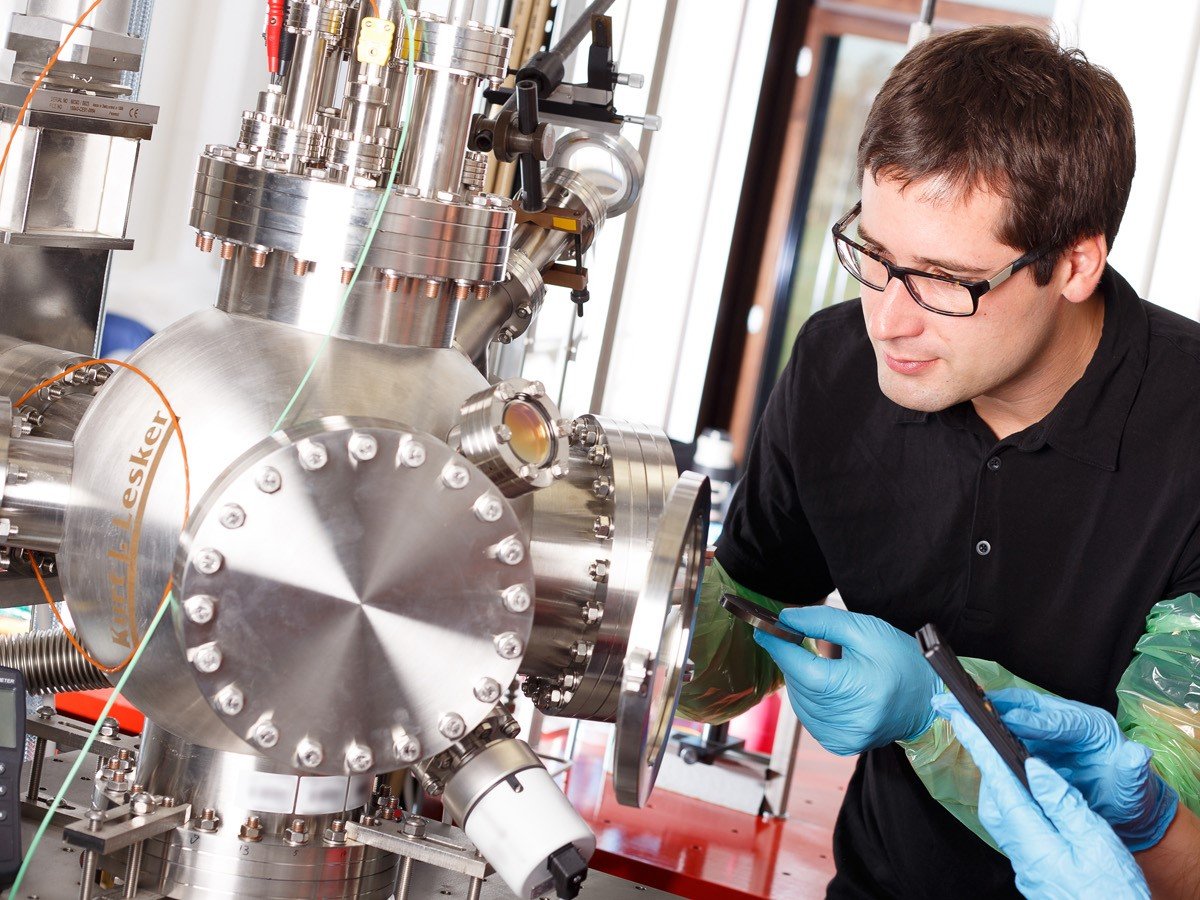Designing a Physics Research Lab
Creating a cutting-edge physics lab involves multiple considerations, from space planning to advanced equipment, energy efficiency, and safety protocols. Credit: iStock, indukas
Designing an advanced physics lab for research purposes requires meticulous planning and attention to detail. From equipment selection to energy efficiency and safety protocols, several factors must be considered to create an optimal environment for innovation and discovery. Here are the key elements to keep in mind when planning a state-of-the-art physics research laboratory.
1. Space Planning for Research Laboratories
Proper space planning is fundamental to the successful operation of an advanced physics lab. The layout should accommodate various types of equipment, provide sufficient space for researchers to move freely, and offer flexibility for future modifications as technology evolves.
Open Floor Plans: Open layouts allow for easy collaboration between researchers and facilitate the reorganization of equipment as needed.
Dedicated Zones: Create separate areas for theoretical work, experimental setups, and data analysis to minimize distractions and maximize efficiency.
Space Planning Checklist:
Adequate room for current and future equipment.
Flexible layouts that can adapt to evolving research needs.
Accessibility and proximity of related research zones (data, theoretical work, etc.).
2. Advanced Equipment Requirements in Physics Labs
Equipping a modern physics lab means investing in high-performance technology capable of supporting advanced research. The types of equipment required will depend on the specific focus of the lab, such as quantum physics, astrophysics, or condensed matter physics.
Essential Equipment for Physics Research Labs:
Particle Accelerators: Used in high-energy experiments for particle physics research.
Lasers and Optics Systems: For precision experiments in quantum mechanics or light-matter interaction studies.
Vacuum Chambers: Critical for experiments requiring controlled environments.
Equipment Considerations:
Ensure sufficient power supplies to accommodate high-energy equipment.
Plan for installation requirements, including floor reinforcements for heavy equipment like accelerators.
3. Safety Protocols in Advanced Physics Labs
Lab safety is a paramount concern, especially in environments where hazardous materials, lasers, or radiation are involved. Safety measures should be built into the lab design to ensure both compliance with regulations and the well-being of researchers.
Key Safety Features:
Radiation Shielding: Necessary for labs working with radioactive materials or particle accelerators.
Emergency Shutoffs: Essential for all high-energy equipment like lasers and generators.
Ventilation Systems: Must meet strict standards to manage air quality in areas where hazardous materials are handled.
Safety Checklist:
Install proper shielding for radiation.
Incorporate multiple emergency exits and safety protocols.
Ensure lab workers are trained in the use of Personal Protective Equipment (PPE).
4. Energy Efficiency in Research Lab Design
Physics research labs often operate energy-intensive equipment. Incorporating energy efficiency measures not only reduces operational costs but also minimizes the lab's environmental footprint.
Strategies for Sustainable Lab Design:
Energy-Efficient HVAC Systems: Implementing advanced heating, ventilation, and air conditioning systems can help maintain climate control without excessive energy use.
Smart Lighting: LED lighting systems with occupancy sensors reduce energy waste.
Renewable Energy Sources: Consider incorporating solar panels or wind energy to offset the lab’s power consumption.
Sustainability Checklist:
Opt for energy-efficient HVAC and lighting systems.
Evaluate the feasibility of renewable energy options.
Implement waste reduction strategies, such as recycling programs and water-saving technologies.
5. Integration of Digital Tools in Physics Research
With the rise of digital tools in research, incorporating technology for data analysis, storage, and collaboration is crucial. Physics research often generates vast amounts of data, making it essential to invest in systems that support data-heavy operations.
Key Digital Tools to Consider:
Supercomputers: For modeling and simulating experiments.
Cloud Storage Solutions: Ensure safe and accessible data storage.
Data Visualization Software: Tools to analyze and present complex datasets visually.
Digital Integration Checklist:
Implement advanced data management systems.
Ensure cybersecurity measures are in place.
Plan for high-speed internet access for global collaboration.
6. Customization and Future-Proofing Your Lab Design
Designing a physics lab for long-term adaptability is key. Consider how your lab might evolve and plan for modular or easily adaptable infrastructure.
Long-Term Considerations:
Modular Lab Benches: These allow for reconfiguration based on changing research needs.
Future-Proof Wiring: Install ample outlets and data ports to support future tech upgrades.
Scalability: Ensure that lab systems like HVAC, plumbing, and electrical can handle increased demand as the lab expands.
7. Regulatory Compliance for Physics Laboratories
Staying compliant with regulatory requirements is essential when building or upgrading a physics research lab. Make sure your lab meets both national and international standards regarding safety, waste disposal, and environmental impact.
Common Regulatory Bodies:
OSHA: Ensures workplace safety.
EPA: Oversees environmental safety and waste management protocols.
NRC: Regulates labs working with radioactive materials.
Regulatory Compliance Checklist:
Ensure lab equipment meets safety certifications.
Stay up to date on changes to environmental and safety regulations.
Implement periodic inspections to maintain compliance.
Conclusion
Designing an advanced physics research lab is a complex but rewarding task. By focusing on space planning, equipment needs, safety protocols, energy efficiency, and digital integration, you can create a lab that not only meets current research demands but is also adaptable to future innovations. Incorporating these elements will ensure your lab remains at the cutting edge of physics research.

